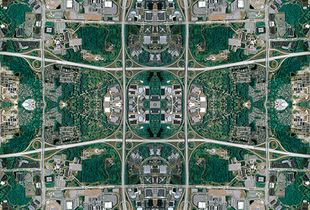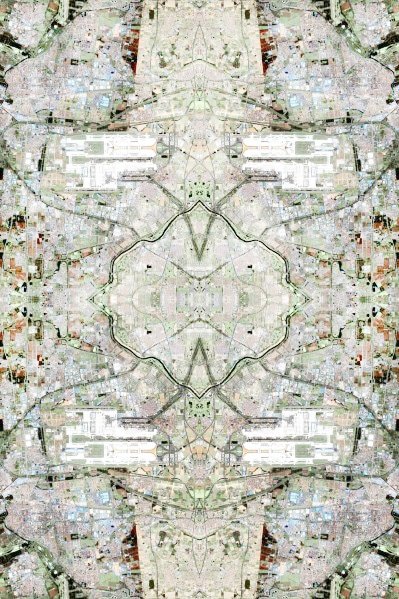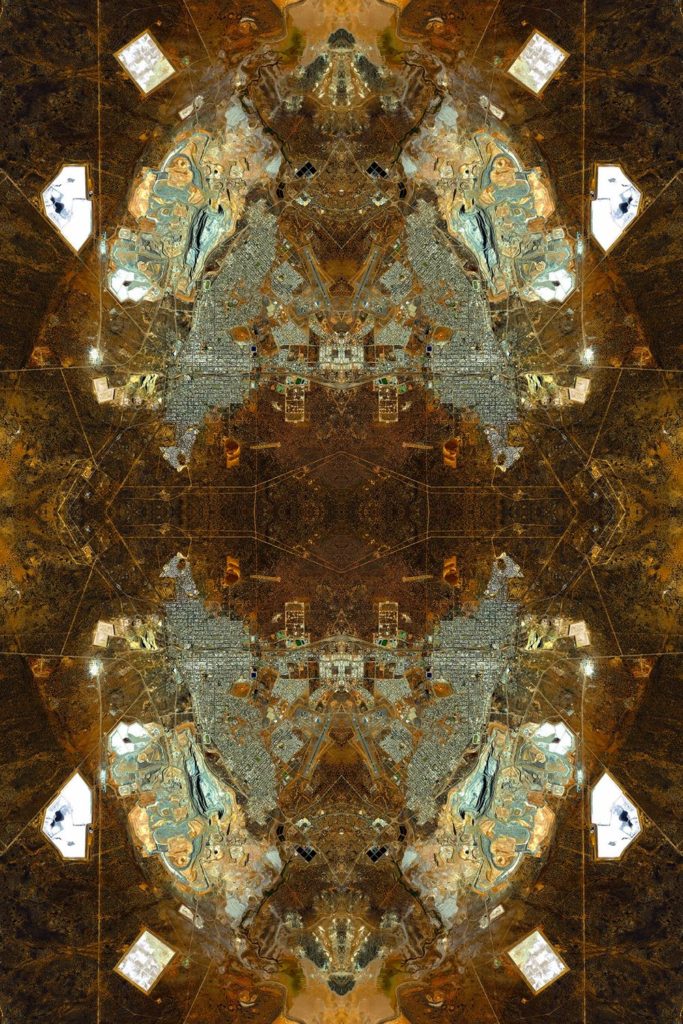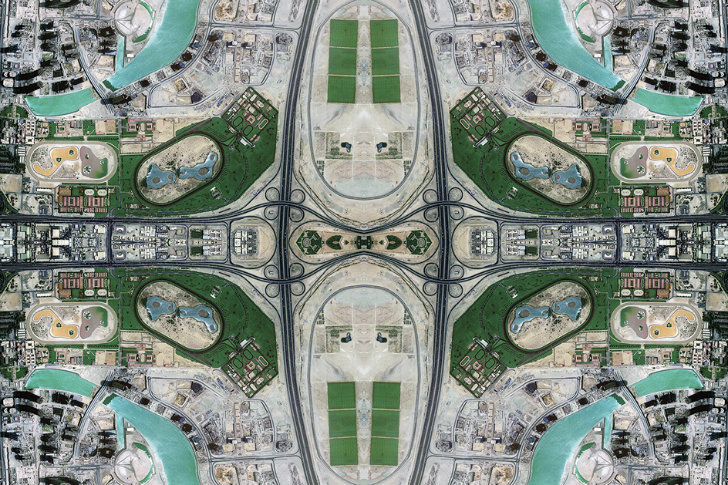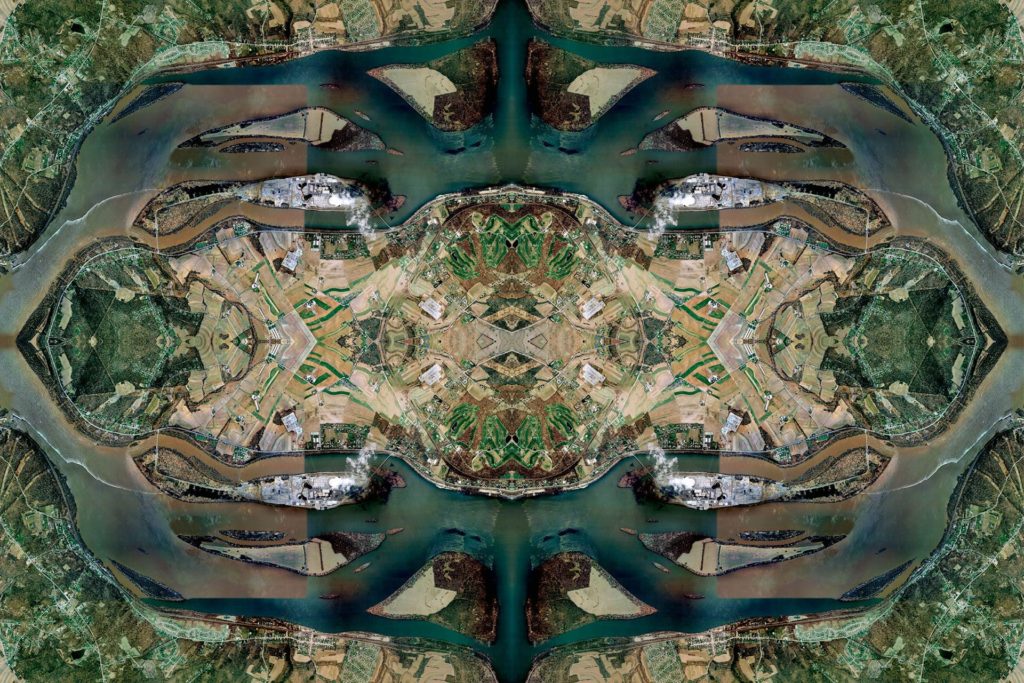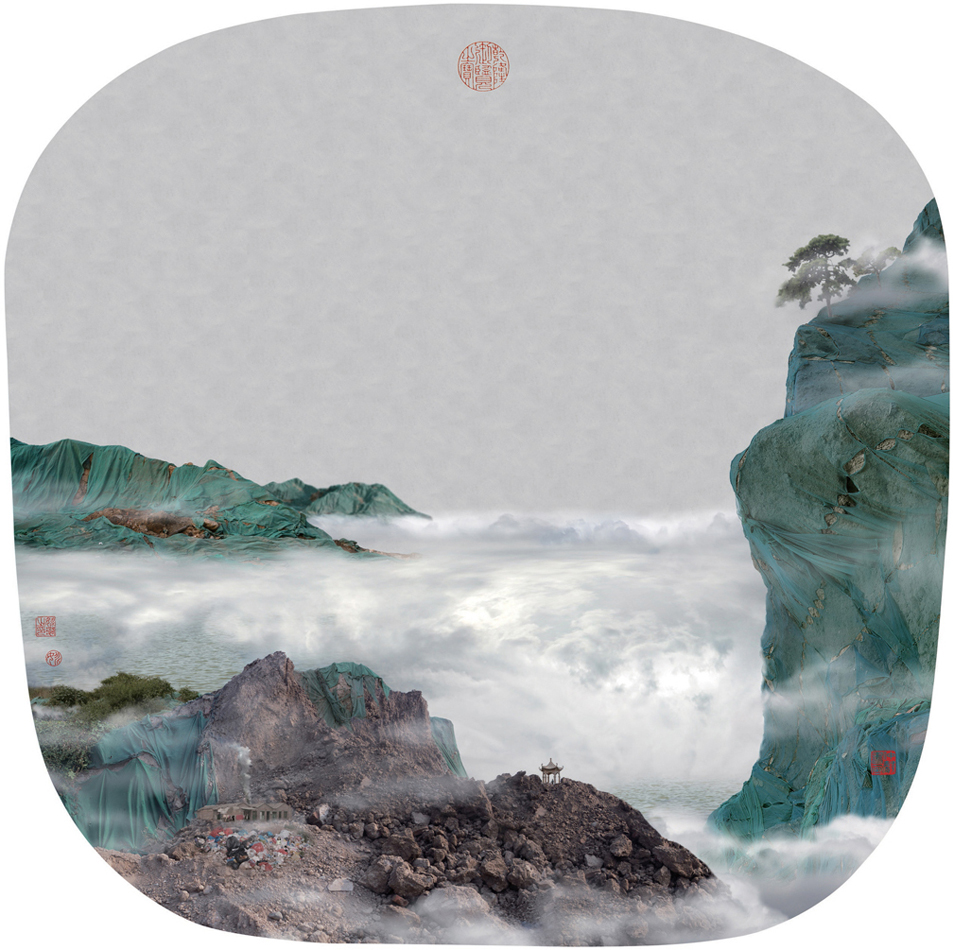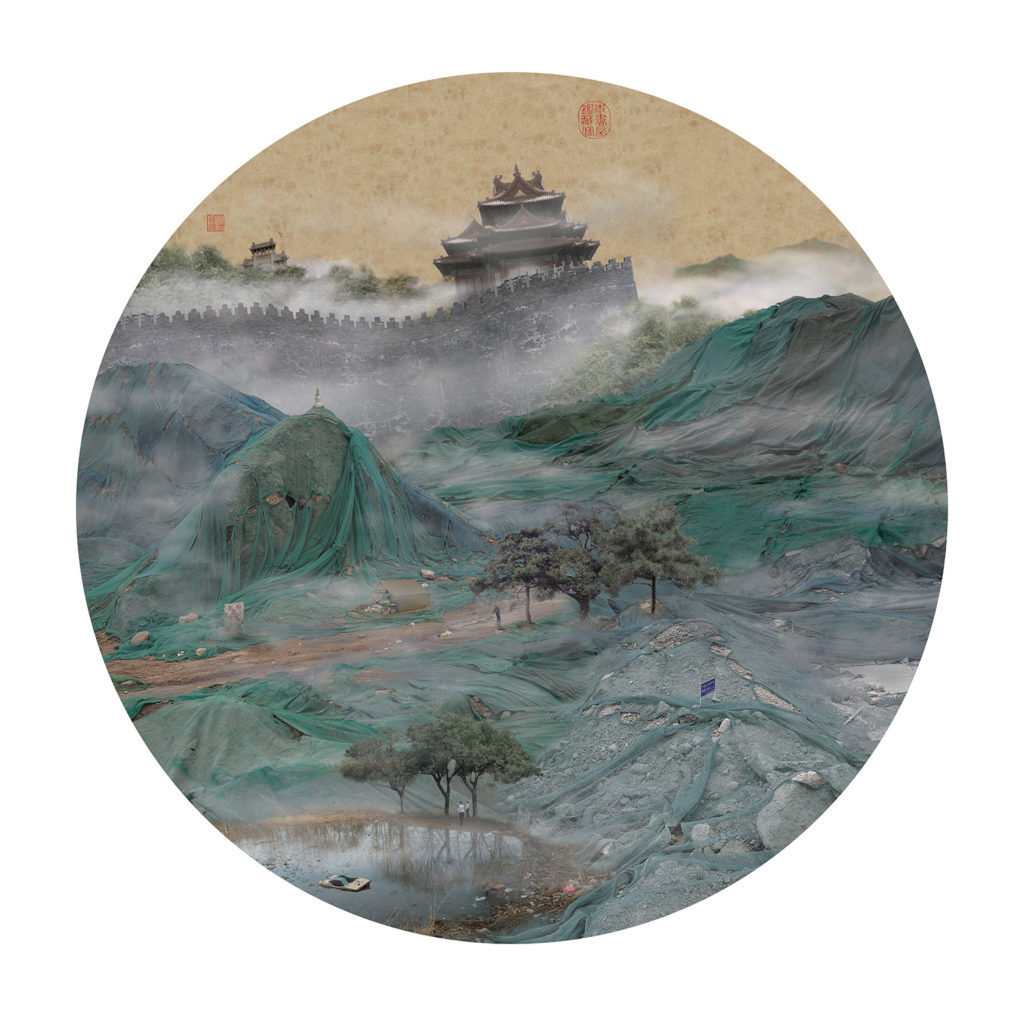David Thomas Smith is an Irish photographer who uses satellite images to create photomontages, which are reflected versions of the original images. He often picks complex man-made structures with a large dependence on oils, precious metals, and tourism, to explore the impact of Anthropocene on the landscape. The reflections show the dull and repetitive nature of architecture in a capitalist society, while also showing how these things could be seen as beautiful from another view.
These pieces are displayed on large canvas’ so people can look at them up close and see each of the small details. They also bear similarities to traditional Persian rugs, with their size and incredible amount of detail.
https://www.david-thomas-smith.com/about
“Appropriated imagery is a predominant feature in my work; I think it’s a rather fitting way to work in a world that has become awash with images. I make work that is multi-dimensional. Having come from a background in documentary photography, it is important to me to draw attention to socio-economic and political issues. While at the same time exploring more metaphysical concepts. I make my work aesthetically pleasing, rich in detail and large in scale in the hopes that the viewer can reflect on the ideas and issues that are prevalent in the work, whilst also getting a better sense of their own position in the world.”
David Thomas Smith
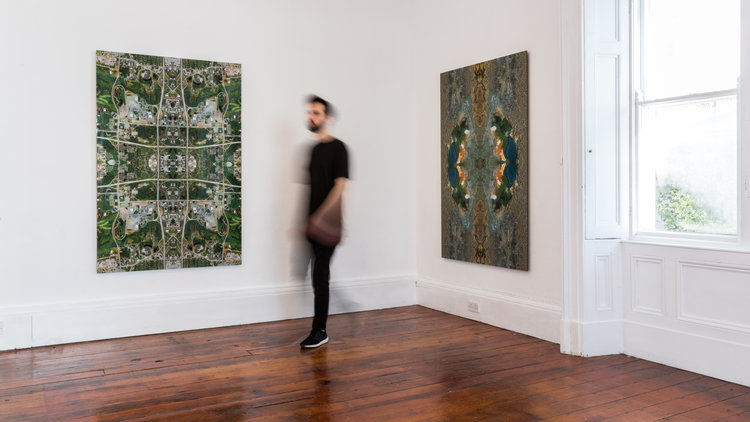
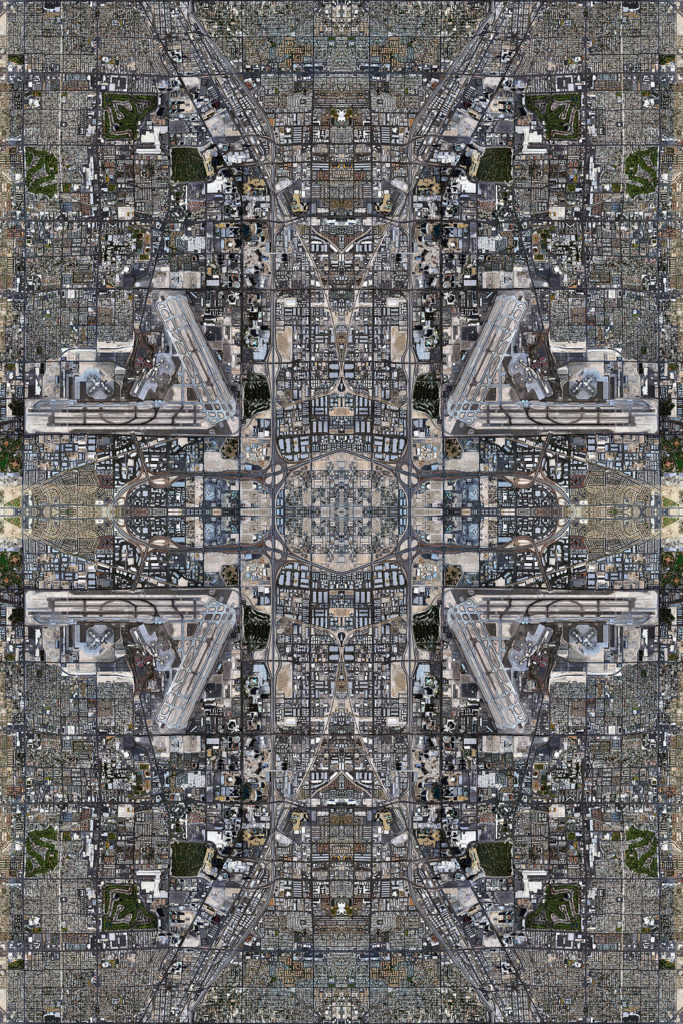
Smith uses aerial photography to obtain images of the city from above and then manipulates them to create dense, kaleidoscopic pieces. In this image, the city has been reflected, resembling a cross (often associated with Christianity, even if Smith is not a Christian, he would still be familiar with the symbols due to his Irish heritage.) – contrasting the city of Las Vegas known for its casinos and various luxuries. The colours are dull despite it being day, juxtaposing the average view of Las Vegas, of it at night with bright colourful lights. There is a clear grid and the image is incredibly geometric, showing the rigid and repetitive nature of modern city design.
Yao Lu is a Chinese photographer who combines photography with traditional Chinese paintings, and explores the relationship between people and the environment. He uses many of the aesthetic conventions of painting when deciding the compositions of his photomontages and wishes to use them to show the contrast between tradition and development.
Lu’s photomontages depict strangely proportioned construction sites fighting against the traditional Chinese painting style he uses. He layers images of green netting, often used in construction and around debris, behind coats of clouds, shrouding them in mystery, forcing the audience to take a closer look and realise that the green is in fact unnatural and artificial, and consuming the landscape around it.
https://photographyofchina.com/blog/yao-lu
https://www.brucesilverstein.com/artists/yao-lu
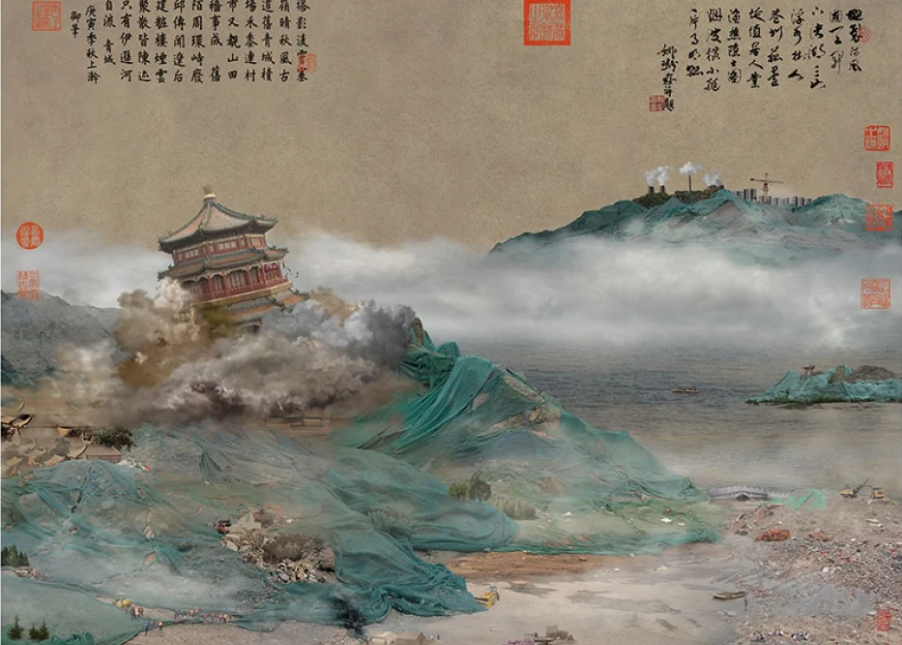
In this image, Lu has used a brown paper background, and the focus is on two hills, one in the midground and one in the background. He uses his signature green netting to represent grass and clouds to cloak the majority of the empty space. In the foreground is a building following traditional Chinese architecture, potentially some kind of temple. It is off balance- potentially representing how the balance between humanity and nature has been tilted due to humanity’s hunger for more. It could also represent how China (and by extension the rest of the world) is neglecting tradition and the past. The clouds surrounding this building look more like storm clouds, perhaps foreshadowing the dark future humanity is heading towards in the coming climate crisis. The area around seems abandoned, inhabited only by some construction equipment sitting in the dusty wasteland. On the hill in the background seems to be a city, spewing cloud like smoke into the sky. It is significantly higher up, looking down on the old world below.

